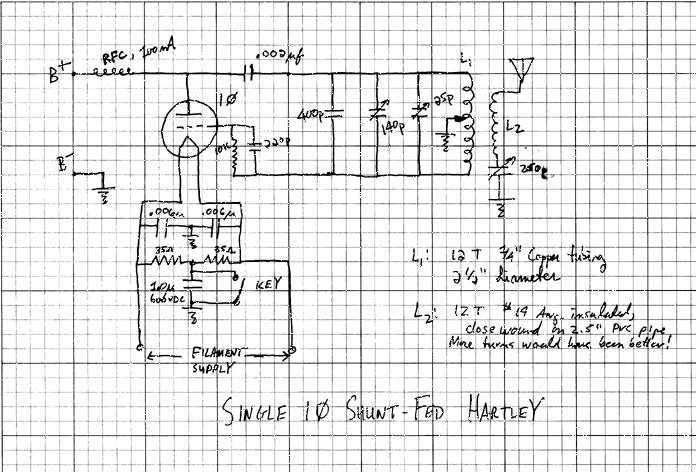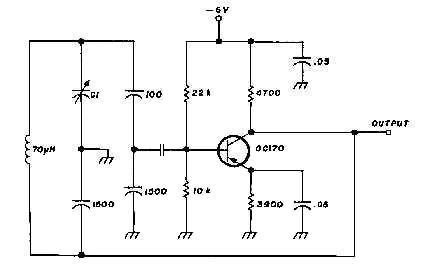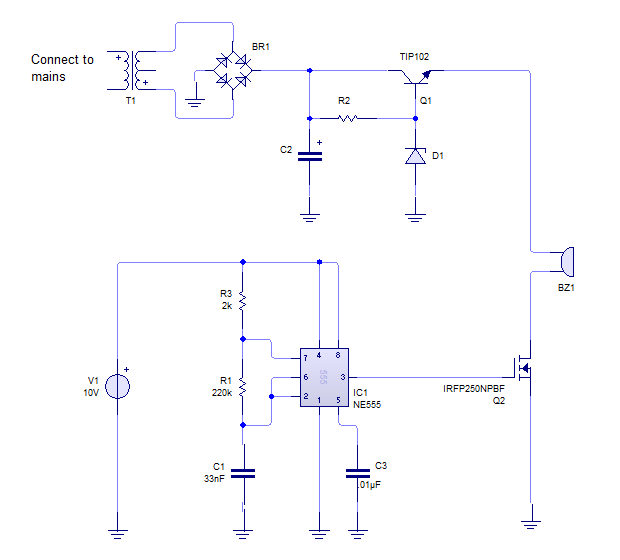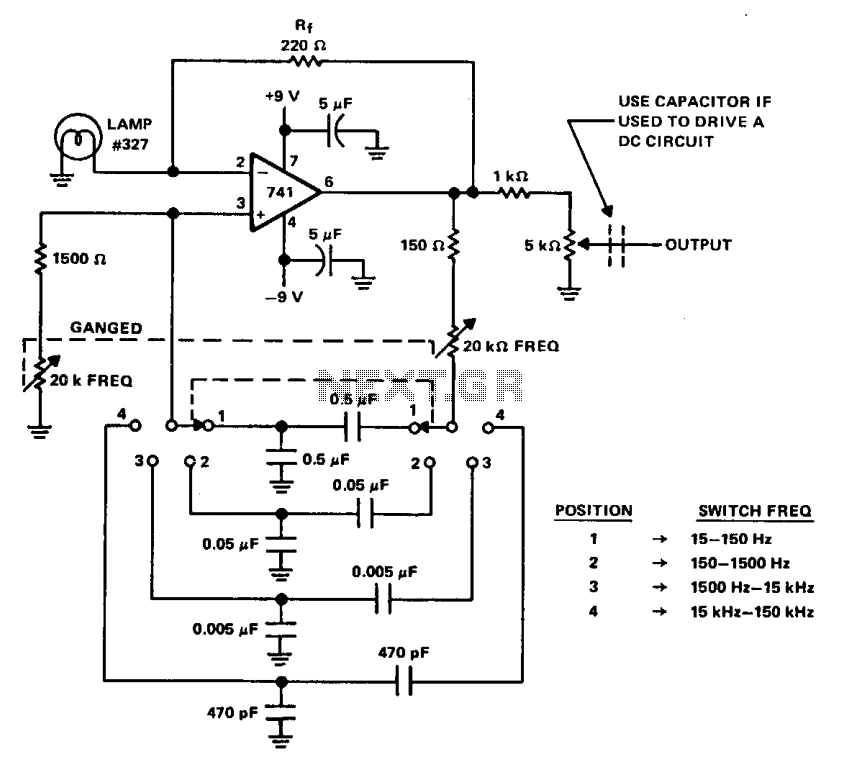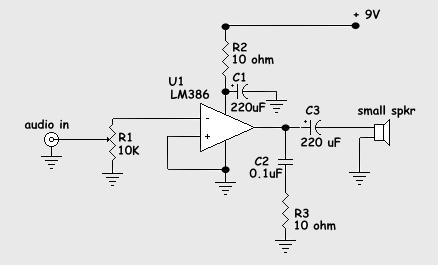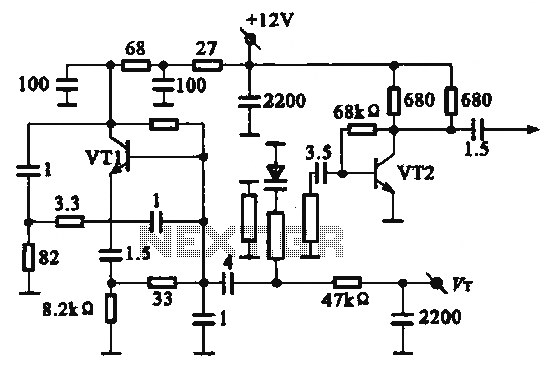
Sine wave oscillator
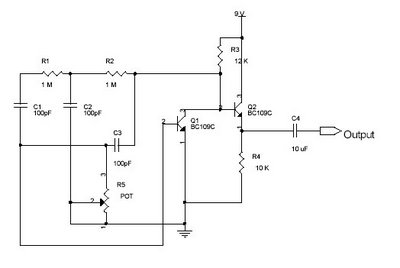
This circuit is a sine wave oscillator with a frequency range from 5 Hz to 5 kHz. The capacitors C1, C2, and C3, with a combined value of 100 pF, produce a frequency of 5 kHz. To achieve different frequency values, adjustments can be made to the capacitance of C1, C2, and C3.
The sine wave oscillator circuit operates by utilizing a combination of capacitors and resistors to generate a stable sine wave output. The frequency of oscillation is primarily determined by the values of the capacitors and resistors in the circuit. In this particular design, the three capacitors (C1, C2, and C3) are configured in such a way that their total capacitance influences the oscillation frequency.
To calculate the frequency of oscillation, the formula typically used is:
\[ f = \frac{1}{2\pi RC} \]
where \( f \) is the frequency in hertz, \( R \) is the resistance in ohms, and \( C \) is the total capacitance in farads. In this circuit, the total capacitance of 100 pF is achieved by combining C1, C2, and C3 in parallel. The ability to modify the values of these capacitors allows for fine-tuning of the output frequency, ranging from a minimum of 5 Hz to a maximum of 5 kHz.
For practical implementation, the resistors used in conjunction with the capacitors must also be selected carefully to ensure stability and linearity of the output waveform. The circuit may include additional components such as operational amplifiers to buffer the output signal, ensuring that the sine wave is not distorted by the load connected to it.
Overall, the sine wave oscillator circuit is useful in various applications, including signal generation for testing, audio applications, and modulation schemes in communication systems. Proper layout and component selection are critical to achieving the desired performance characteristics of the oscillator.This scheme is sine wave oscillator, with frequency from 5 Hertz up to 5 KHZ. Capasitor C1, C2, C3 altogether valuable 100pF, yielded frequency 5 KHZ. To get other frequency magnitude of we ready to change value at C1, C2 and C3, like under this. 🔗 External reference
The sine wave oscillator circuit operates by utilizing a combination of capacitors and resistors to generate a stable sine wave output. The frequency of oscillation is primarily determined by the values of the capacitors and resistors in the circuit. In this particular design, the three capacitors (C1, C2, and C3) are configured in such a way that their total capacitance influences the oscillation frequency.
To calculate the frequency of oscillation, the formula typically used is:
\[ f = \frac{1}{2\pi RC} \]
where \( f \) is the frequency in hertz, \( R \) is the resistance in ohms, and \( C \) is the total capacitance in farads. In this circuit, the total capacitance of 100 pF is achieved by combining C1, C2, and C3 in parallel. The ability to modify the values of these capacitors allows for fine-tuning of the output frequency, ranging from a minimum of 5 Hz to a maximum of 5 kHz.
For practical implementation, the resistors used in conjunction with the capacitors must also be selected carefully to ensure stability and linearity of the output waveform. The circuit may include additional components such as operational amplifiers to buffer the output signal, ensuring that the sine wave is not distorted by the load connected to it.
Overall, the sine wave oscillator circuit is useful in various applications, including signal generation for testing, audio applications, and modulation schemes in communication systems. Proper layout and component selection are critical to achieving the desired performance characteristics of the oscillator.This scheme is sine wave oscillator, with frequency from 5 Hertz up to 5 KHZ. Capasitor C1, C2, C3 altogether valuable 100pF, yielded frequency 5 KHZ. To get other frequency magnitude of we ready to change value at C1, C2 and C3, like under this. 🔗 External reference
